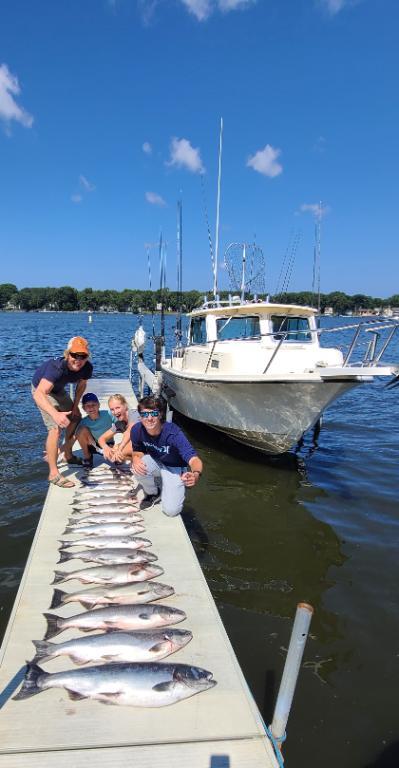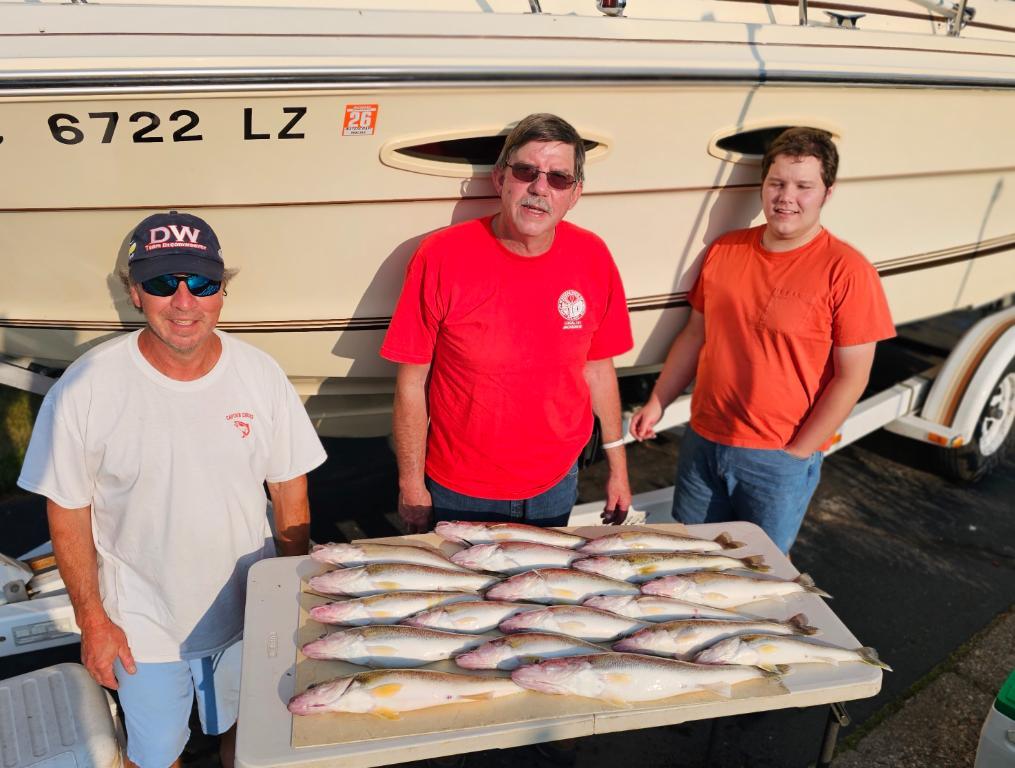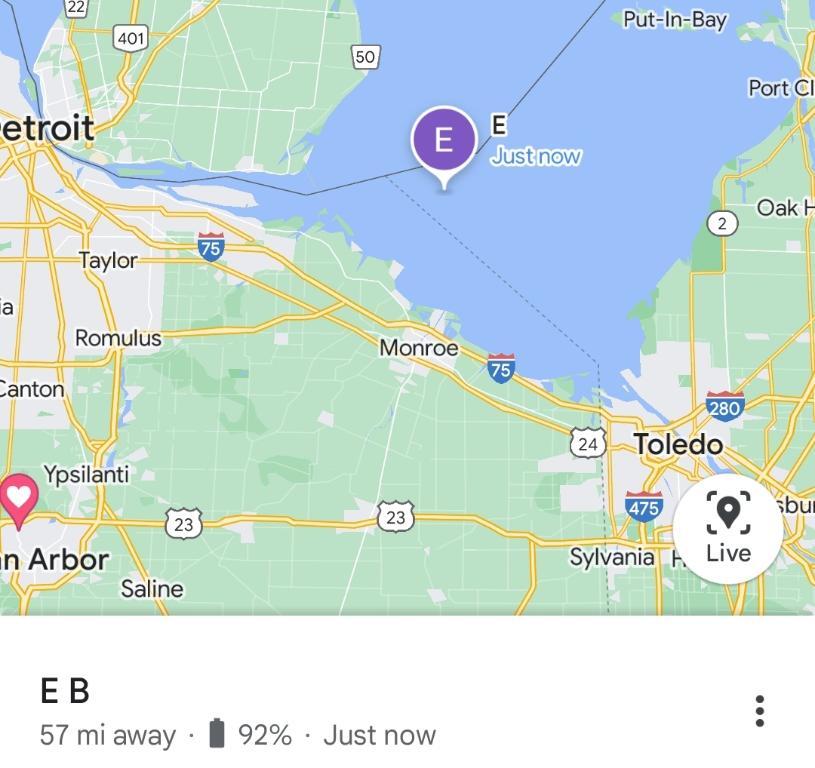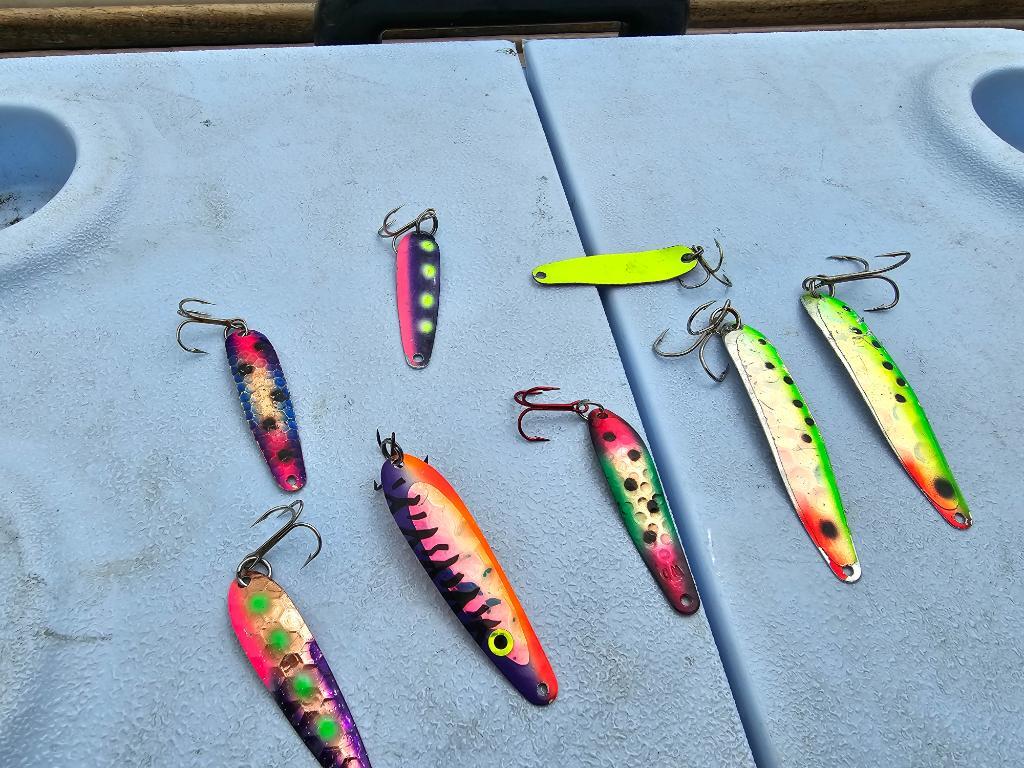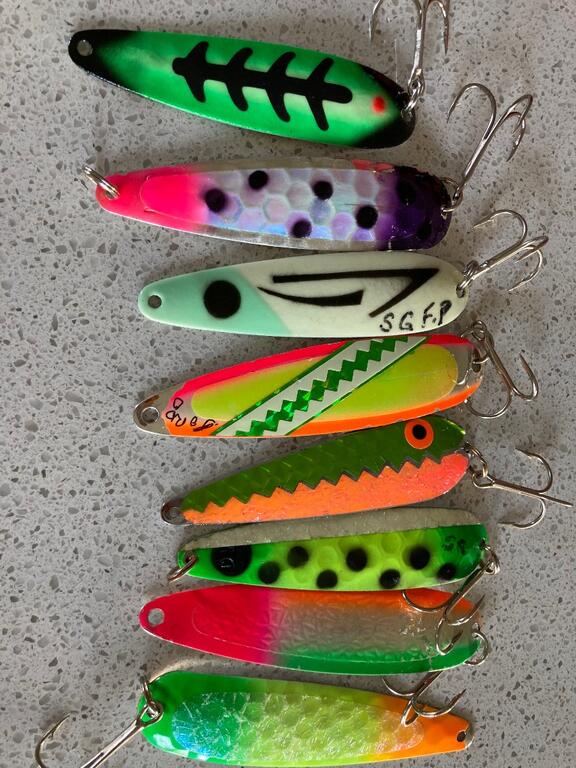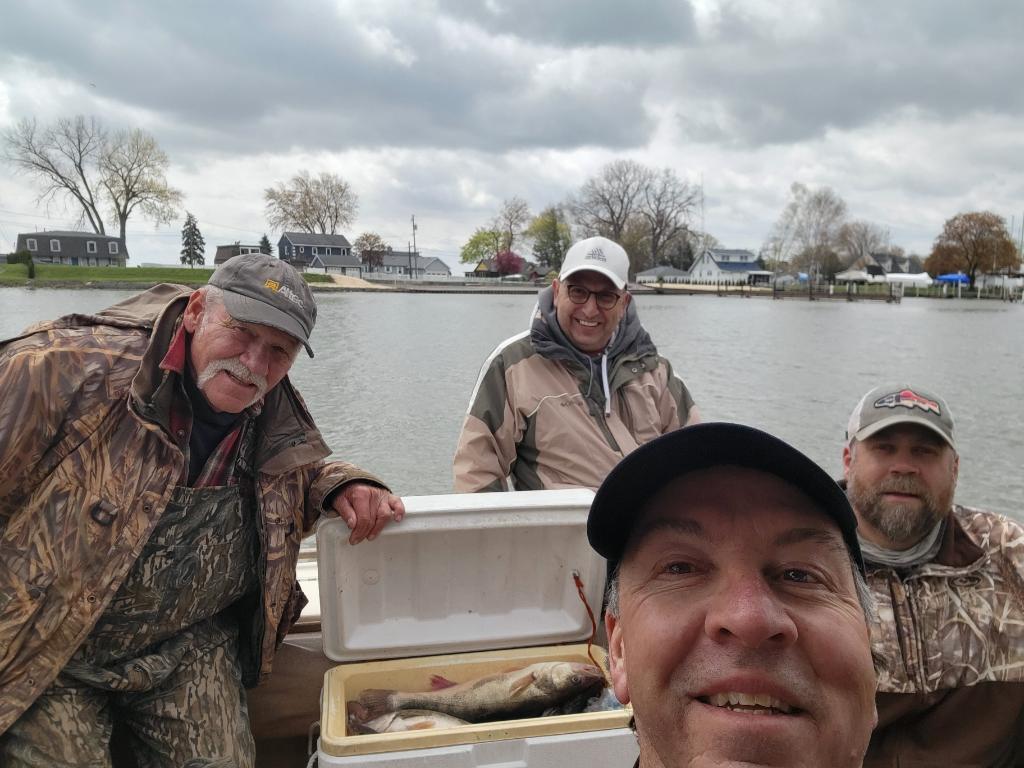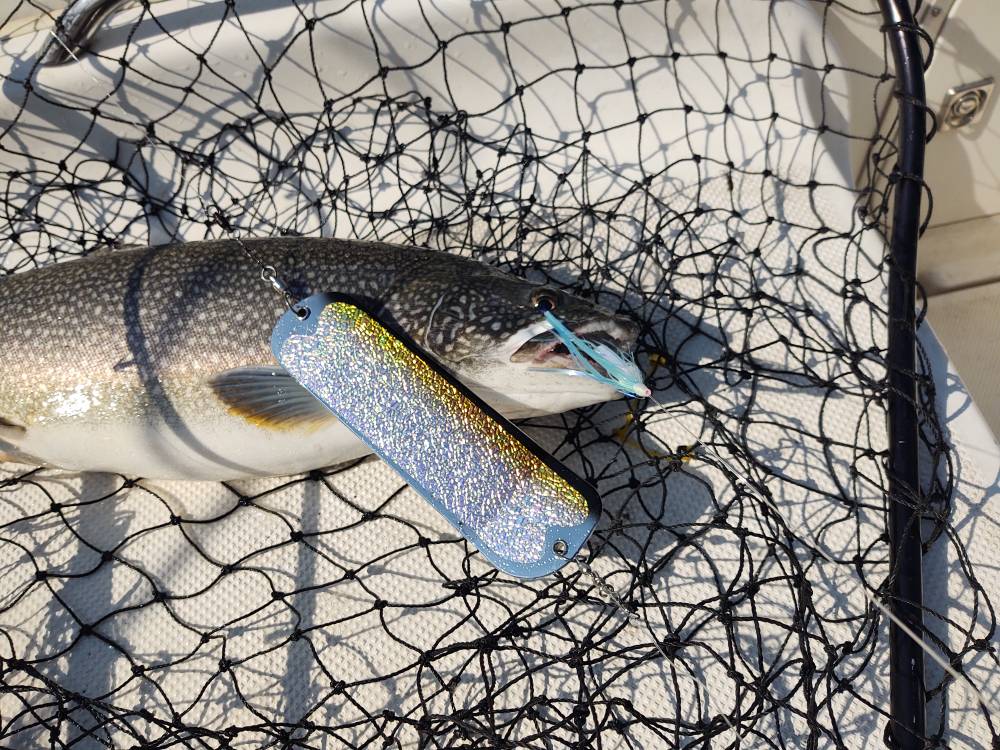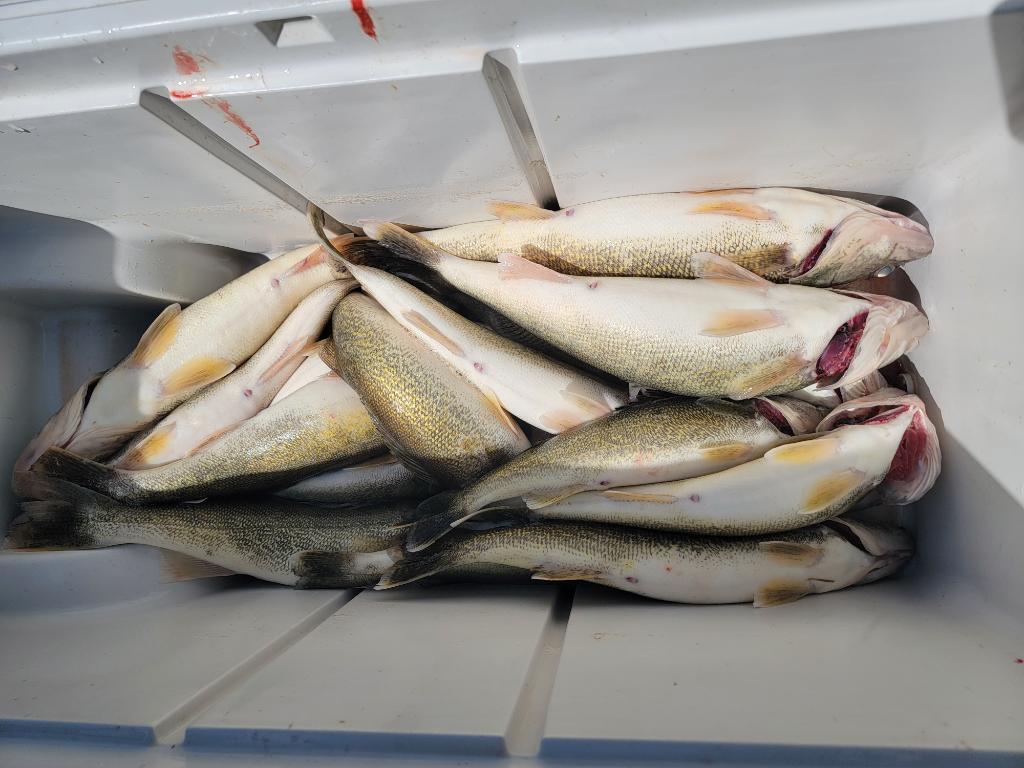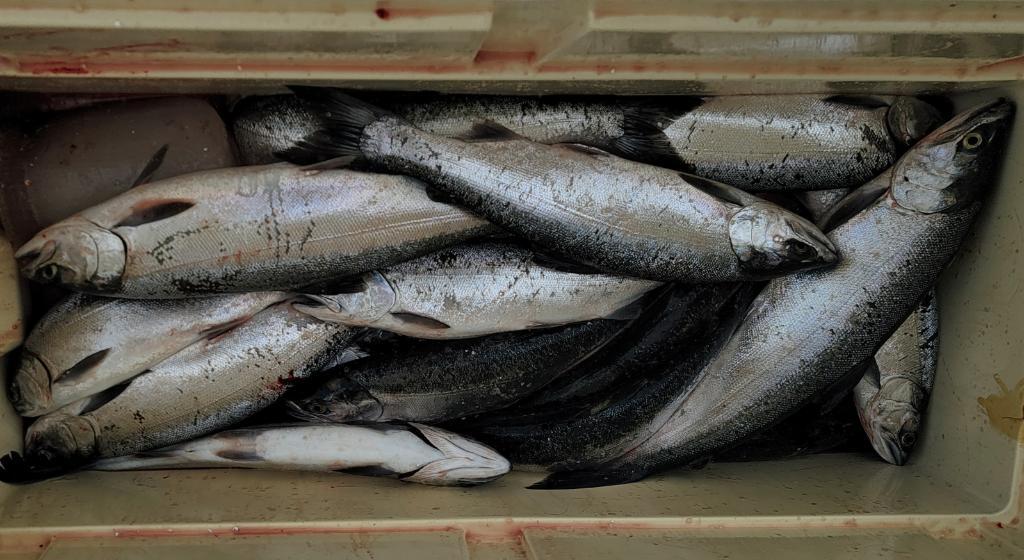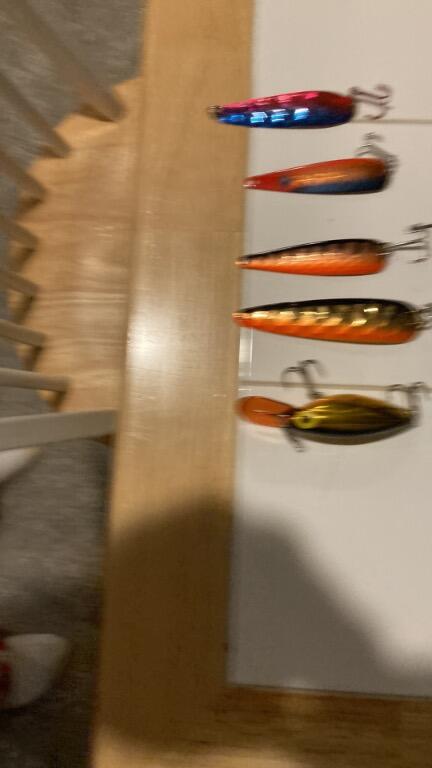-
Posts
2,828 -
Joined
-
Last visited
Everything posted by EdB
-
https://www.manisteenews.com/news/article/boat-sinking-lake-michigan-18333287.php
-
https://protectmiresources.com/great-lakes-decree-put-in-place-despite-stakeholders-and-anglers-objections/ A federal judge accepted a proposed consent decree controlling five sovereign Michigan Tribes, the federal government and the state, overruling evidence that expanded gillnetting would negatively impact the Great Lakes. In handing down his order, Judge Paul Maloney rejected the Coalition to Protect Michigan Resource’s claim that biological harm is likely to happen to the resource and there will not be proper measures in place to mitigate that harm. Gillnetting in Michigan was banned by the Michigan Department of Natural Resources during the 1970s after research concluded gillnets are non-selective and have disastrous consequences for fishery populations. The Tribes asserted their treaty right to fish with gillnets, and after several court cases and injunctions, the first Great Lakes Consent Decree was adopted in 1985. CPMR members have served as amici through every iteration of the court litigation and negotiations since the late 1970s. President Tony Radjenovich said conservationists and anglers across the state should be concerned about this decision. “Expanded gillnetting now allowed in bays and other areas of the lakes that haven’t had them for more than 40 years will cause social and biological consequences to the fishery resource,” Radjenoivch said. “Our groups were trying to be proactive in protecting the Great Lakes fisheries by objecting to these measures being implemented through this decree; however, now we will have to remain even more vigilant to ensure our worst-case scenarios do not come to pass.” The Sault Ste. Marie Tribe of Chippewa Indians did not consent to the decree. They are the only party to the case not to do so. During these negotiations, CPMR has acted as an amicus or friend to the court. Amy Trotter, chief executive officer of Michigan United Conservation Clubs and CPMR treasurer, said accountability and oversight will be key moving forward. “We have to focus on ensuring that the words on paper and the intent are followed through with and that all negative consequences are mitigated under the decree,” Trotter said. “Regardless of the words on paper, the Michigan DNR, United States Fish and Wildlife Service, the five Tribes and stakeholders must strive to ensure no commercial activity or management decisions cause undue harm to the resource.” CPMR comprises Michigan United Conservation Clubs, the Michigan Charter Boat Association, the Michigan Salmon and Steelhead Fishermen’s Association and Hammond Bay Area Anglers, accompanied by an assortment of angling and conservation supporting members. Since the coalition’s inception, it has worked to ensure that recreation anglers’ voices are represented during the Great Lakes Consent Decree negotiations. You can support the work of CPMR by donating here: https://www.gofundme.com/f/protect-great-lakes-sportfishing. To view the judge’s opinion, click here. lick to share on Twitter (Opens in new winlick to share on Facebook
-
FYI Pentwater Boater Alert All Boaters - the Pentwater Channel dredging project has started. The dredger has a cable running totally across the channel, thus you MUST alert the operator of your approach to have them drop the cable to give you safe passage. Contact the Operator: Barry J - Channel 16. They will advise as to which side for you to move past. Be sure the cable is dropped before moving past the barge. Plus, the discharge tube runs out the channel and N - wrapping out and then back into the beach N of the State Park. There are orange buoys marking the tube, but again, take caution passing over the tube - it should be on the bottom - but caution is the best option. PSA Board
-
-
- 2
-

-
We started in MI waters on Friday but ran into heavy weeds disrupting our trolling. Pulled lines and ran NE. Started a few miles north of Sputnik and kept going north. We were near where the MI,Ohio and Canadian borders meet. There was a huge school of fish there and got 18 in about 2hrs. All pulling diver disc's and spoons on 80 ft leads. Went back there Sat and the fish where there but so we're the weeds. We stuck it out due to the many marks on the graph but had to work for them cleaning weeds 3 to 4 times for every fish. Took us about 4 hours to get 18. Same program as the prior day. Good luck.
- 1 reply
-
- 2
-

-
We fished 19 to 24 fow trolling spoons. Could not get a side of flicker shade and bandits to go so we switched over to all spoons and our catch rate increased once we got our leads dialed in. Tried from 30 to 80 ft, ended with all at 60. We got our limit of 18. Had some heavy winds, at least they were out of the WNW. Spoons and diver disks with 60ft leads were best. Got a few on riggers down 12 to 19ft. Good luck!
-
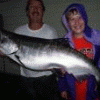
Grand Haven 5/4
EdB replied to dan agnello's topic in Michigan Waters Fishing Reports - Salmon and Trout
-
-
- 2
-

-

Ludington?
EdB replied to Rockin' Randy's topic in Michigan Waters Fishing Reports - Salmon and Trout
There has been a decent brown fishery around the harbor and just off the beach this spring. I would check out shallow water to see if they are still around. Might be a tad early the the first kings usually show up off the river plume at the pierheads too. Good luck!- 1 reply
-
- 1
-

-

Frankfort 4/15
EdB replied to Rockin' Randy's topic in Michigan Waters Fishing Reports - Salmon and Trout
-
Fished with a friend on Friday and then had the shake down run on my boat Saturday. We got limits of 18 both days jigging various humps in Michigan waters. Orange/chart hair jigs with minnows where best. Trollers were catching fish too but we love the early season jig bite, it's a lot more fun fighting them. We got a real nice size class on Saturday.
-
- 1
-

-

SLM BUOYS DEPLOYED
EdB replied to dan agnello's topic in Michigan Waters Fishing Reports - Salmon and Trout
Thanks Dan. -
-

SoHa Coho 3/9/23
EdB replied to dan agnello's topic in Michigan Waters Fishing Reports - Salmon and Trout
-
Welcome to GLF, coho's are starting to bite along the south shore and up the MI coast.
-
Welcome, fishing is starting to get underway now.
-
Welcome to GLF, a little slow here in winter but things will be picking up soon.
-
This is the most critical time for anglers to step up and help in our fight to prevent a massive expansion of gill nets in the Great Lakes. Here is how you can help. The Coalition to Protect Michigan Resources and their attorneys are representing sport anglers in Federal Court and it has been and will continue to be a very costly legal battle. Please contribute as much as you can to this campaign to fund our representation. CPRM is filing objections to the proposed decree in court. They have an appeal before the Federal Appeals court for an equal role in continued negotiations. This costly fight will continue for many months to come. This is the only way to improve a new consent decree that is fair to both the Tribes and sport anglers. We have to act now! We are all quick to drop a $20 for the hottest baits and we spend $100's on rod and reel combos and other tackle. Please go to the link and make a contribution to keep our representatives and attorneys in this fight. https://www.gofundme.com/f/protect-great-lakes-sportfishing
-
Our Indiana GLSI board member attended the 2 Indiana DNR stocking meetings last weekend. The subject of the meetings was about increasing the number of king salmon stocked in Indiana, and how to allocate that stocking for the next 3-5 years. The last stocking meeting was held three years ago. Indiana will increase their stocking quota from 225,000 Kings to the new announced number of 275,000. Most, if not all of this will come from the Mixsawba hatchery. These guys are rock stars for Indiana. Indiana doesn’t have any natural reproduction, and none of the stocking sites are premier stocking sites. But Mixsawba makes it work and it is appreciated by the fishing community. Last year, Michigan allocated $30 million dollars of the Federal money that all states are getting to invest and improve in their hatchery system. Indiana’s hatcheries could benefit from upgrades to the bio-filters and infrastructure. We would like to see this happen at Mixsawba. This comes down to priorities in allocating Federal money in Indianapolis and our fisheries do not appear to be a priority there. Indiana has stocked their 3 primary ports, Michigan City, Portage and East Chicago. Even though Indiana is increasing king stocking, it was announced at the meeting they were considering ending stocking at East Chicago. The state will be surveying all anglers who bought a trout and salmon stamp for feedback on cutting the plant at East Chicago. The survey will ask if there should be no changes in stocking locations or if East Chicago’s stocking should be eliminated and the fish moved to Portage and Michigan City. The GLSI questions this survey and process. It would make sense to reduce ports and consolidate stocking if king stocking was being cut but with an increase, we feel it’s better to stock all 3 ports to provide more opportunity to anglers. The port at East Chicago had their first return of kings last fall which was comprised of 2-year-old kings. 2023 will be their first return of mature 3-year-old kings. We feel it is better to wait one more year to evaluate the return of 3-year-old fish and use that information in making stocking decisions. This port would suffer socially and economically. It should also be noted this would reduce the number of spots for Indiana shore fishermen. In addition, local anglers at East Chicago have prepared and are ready to launch a net pen program for stocked kings. While there is some data from Wisconsin that net pens do not make a difference, Michigan has had tremendous results with returns from net pens. Common sense would indicate that if you net pen kings, acclimate them, feed them and let them grow in size before releasing them, more will survive. If you have ever seen smolts right after they are dumped from the stocking truck, they are dazed and disoriented and easy prey for seagull and cormorants. The local East Chicago community is asking for the survey to be held off one year so proper evaluation and science can be applied before any decisions are made. It should be noted that the survey pits fishermen against each other and comes down to a vote on where to stock fish. We think it is better to make stocking decision based on science and data. If a port has bad returns, then reduce or eliminate stocking but if a port has good returns, then stocking should not be cut, and that information should be the basis for the decision. Our local GLSI board member has advocated that Indiana create a citizen’s advisory board to help guide stocking decisions like the Michigan process. In Michigan, advisors are presented with the data on charter boat catch rates, coded wire tag returns, angler effort and creel reports to gauge stocking success to use the best science to advise the DNR on where to stock fish. An underlying principle is the get the best possible return to fishery for the cost of each fish stocked. IDNR leadership in Indianapolis has rejected this concept and is choosing to go with a survey. The downside is decisions will be made based on emotions or the number of anglers who respond and not based on data and science. One last positive of stocking 3 ports instead of 2 is it provides some insurance should a plant fail at one site. There have been several chemical spills from the steel mills at Portage that have resulted in large fish kills. What if this happened when newly stocked king smolts were in the river? We feel decisions based on science, and the best updated information, along with informed anglers working in a true partnership with the IDNR will lead to improved fishing for all Indiana anglers. We want anglers to think about this before returning their stocking survey. We would also request this question be added to it – Should Indiana allocate Federal funding to upgrade our hatchery systems? Anglers need to let the leadership in Indianapolis know that we need more investment in our fisheries. The GLSI is encouraging all Indiana anglers to vote for the status quo and continue stocking all 3 ports for at least one more year to evaluate the return of mature kings at East Chicago.
- 1 reply
-
- 1
-

-

New Consent Order w/Tribes
EdB replied to dan agnello's topic in Michigan Waters Fishing Reports - Salmon and Trout
The 2000 decree is extended until the proposed decree is settled. Sault Tribe won't agree to it and wants to self manage their fishery. The court opened up a period to file objections to the proposed decree until Jan 20th, 2023. Has yet to rule on the Sault Tribe motion. -
Update on proposed consent decree court proceedings today: An update hearing was held at Federal Court in Kalamazoo today. As this was a public hearing we had a member of our board attend to collect some first hand information. Also we wanted to show public support for The Coalition to Protect Michigan Resources who have been fighting for the interests of recreational anglers in these negotiations when they are allowed. The main reason for the hearing was to set dates to submit objections to the proposed decree which has been set for Jan 20 2023. However there were some interesting takeaways from the meeting. #1 For the first time the lawyer for the CPMR was allowed to sit amongst the other lawyers instead of in the gallery and was able to address the judge during the hearings. This hopefully shows a future willingness to give weight to the CPMR's concerns without having to run them through the state. #2 The Sault tribe continues to put forth that they do not consent to the decree. Their position is that the 2000 decree has expired and they are no longer held to any obligations associated with it. Their desire is to regulate themselves and to fish without any regulations brought by the State of Michigan or other tribes. They have filed 1 motion and will be filing another by Dec 27 detailing these legal arguments. Objections to those motions by the other parties will also be heard on Jan 20. GLSI will continue to attend any public court proceedings and update our membership as they happen. Picture of the Federal Court in Kalamazoo
-
- 1
-

-

Lund Tyee vs Lund Fisherman - Advice Needed
EdB replied to TrueNorth33's topic in General Discussion
I don't think that would make a big difference. Try calling Lund and ask why they have different hp limits. Hull design or strength??? It is always better to have an overpowed boat than and underpowered boat.


